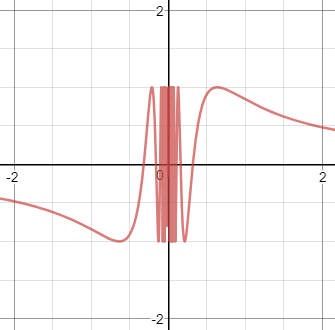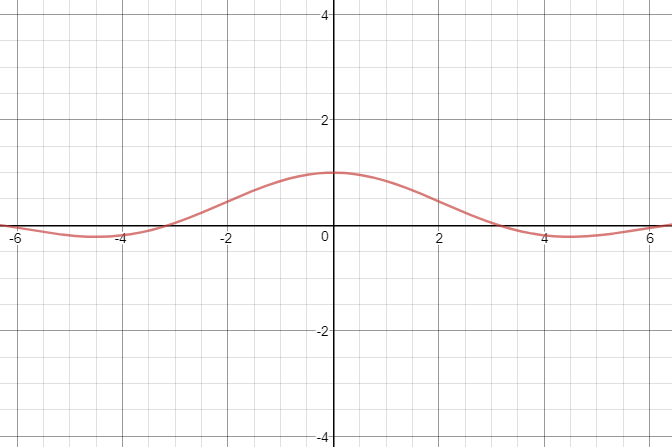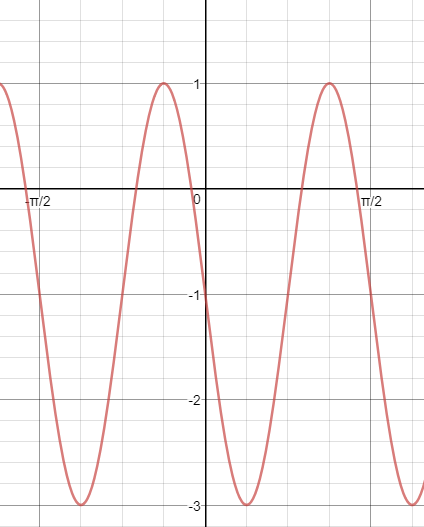What is the common difference in the following sequence?
100, 95, 90, 85, 80, ...
d = -5
lim_(x->0)abs(x)/x
DNE!
Which trig function is the reciprocal of cosecant?
sine
What is the
cos(pi/3)
1/2
Evaluate:
x=9^(-3/2)
x=1/27
What is the common ratio in this sequence?
1, 2, 4, 8, 16, ...
r = 2
lim_(x->0)sin(1/x)

DNE! Oscillating
If
secu=-3/2
and
tanu>0
find the value of
sinu
sinu= sqrt(5)/3
Where does tangent usually have asymptotes?
((2n+1)pi)/2
Solve for x:
log_4x=3
4^3=64
What is a20 for the following sequence?
1, 2, 4, 8, ...
a_n=2^(n-1)
a_20=2^19=524288
lim_(x->0)sinx/x

1
Solve for x:
2tan^2x+2tanx=0
tanx(2tanx+2)=0
tanx=0, tanx=-1
x=0, pi, pi/4, (5pi)/4
What is the period of the following graph?

pi/2
Expand the following to be written as the sum or difference of logs:
ln[(x^2(x-2)^3)/sqrty]
2lnx+3ln(x-2)-1/2lny
Explain the meaning of the following:
sum_(i=1)^n a_i
The sum from i=1 to n of the sequence ai
lim_(x->1)(x-1)/(x^2-1)
Factor and cancel!
1/2
Verify the identity:
(sec^2theta-1)/sec^2theta=sin^2theta
=tan^2theta/sec^2theta
=tan^2theta*cos^2theta
=sin^2theta/cos^2theta*cos^2theta
=sin^2theta
What's the phase shift of the following function?
y=sin(x/2+pi)
left
2pi
What is the rate of depreciation of a $17,500 car if it is worth $12,000 after 2 years.
(-)17%
Find S200 if
a_n=3n-4
S_200=(200/2)(a_1+a_200)
S_200=100(-1+596)=100(595)=59,500
lim_(x->0)x/(sqrt(x+1)-1)
2
Solve for x:
3tan^2x-1=0
tanx=1/sqrt(3)
x=pi/6, (7pi)/6
What's the reference angle of
(7pi)/4
pi/4
How long will it take $600 to double if the interest rate is 1.5%?
47 years